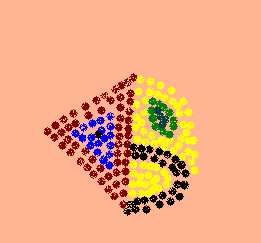
It was the perfectly bright weather to admire this unique creation in front of the National Museum of Anerican History. It symbolifies creativity, deft handling of tools, deep understanding of the elements, and pays tribute to the creative mindset of humans. Standing stop a tall and slender tower this metallic creation invites us to walk through this museum and learn about the history of making America through the past 250 years or so.
Yes, there is a lot of historical exhibits about the early days, wars, making if the flag and national song. All of these show case the courageous decisions and sacrifices of millions of people to build a vast country.
On the ground floor of this museum is a treasure trove of collection showing the innovative creations that has enabled out modern lives. There were the early models of sewing machines, surgical instruments, bicycles, iPods, polio vaccine vials, lawn movers, enamel coated cast irons rives, etc. it is easy to limit credits to these creations since we have even more amazing and creative ones. However it is more valuable to learn about the triumph of human ingenuity to create both dramatically improved versions as well as net new creations.
There are about 138,000,000 artifacts in collection across the Smithsonian. And possibly a quarter of these are likely new creations. There are more tinkeres at work across the nation and the world who will create novel products for our future use. How about automatic monitoring of water quality in our pipelines to help us stay healthy (the people of Flint, MI would appreciate it? Better yet, automatic filtering and improvement would be nice. Just heard that Google (nay, Alphabet) got permission to test drive the driverless cars in Seattle. I look forward to the days when my kids can get to places safely without me driving them around. Can I and others travel across the continent in less than 10 hours? Could the airplanes harvest solar energy much like the satellites and hence reduce cost of air travel? We will likely soon need systems to detect and treat Zika virus.
We will need plenty more innovations to come. Hats off to the innovators!

Leave a Reply